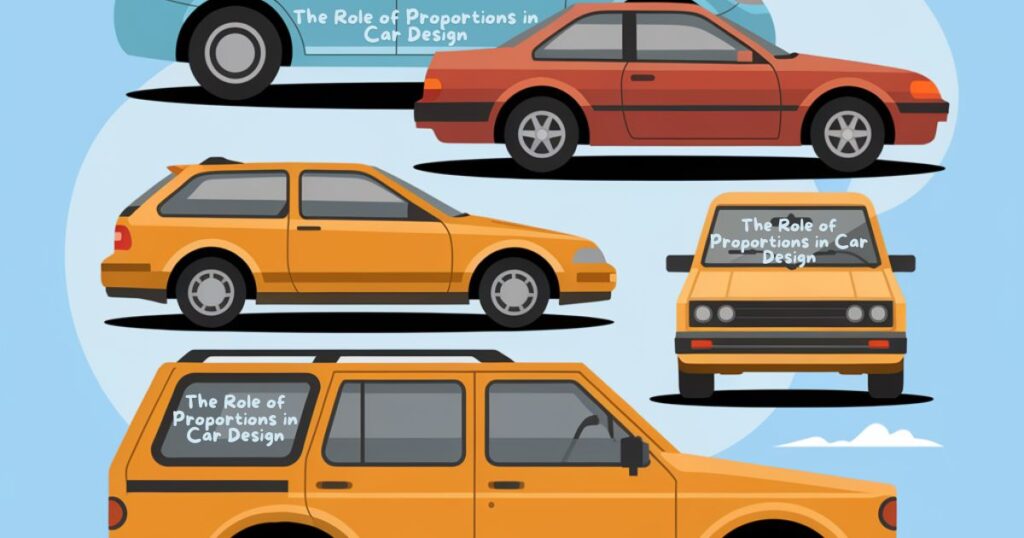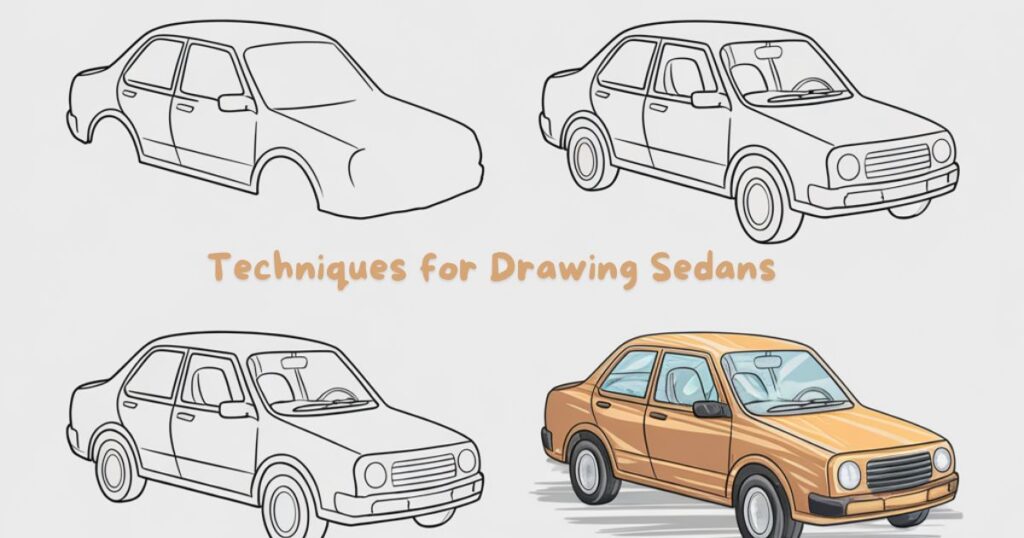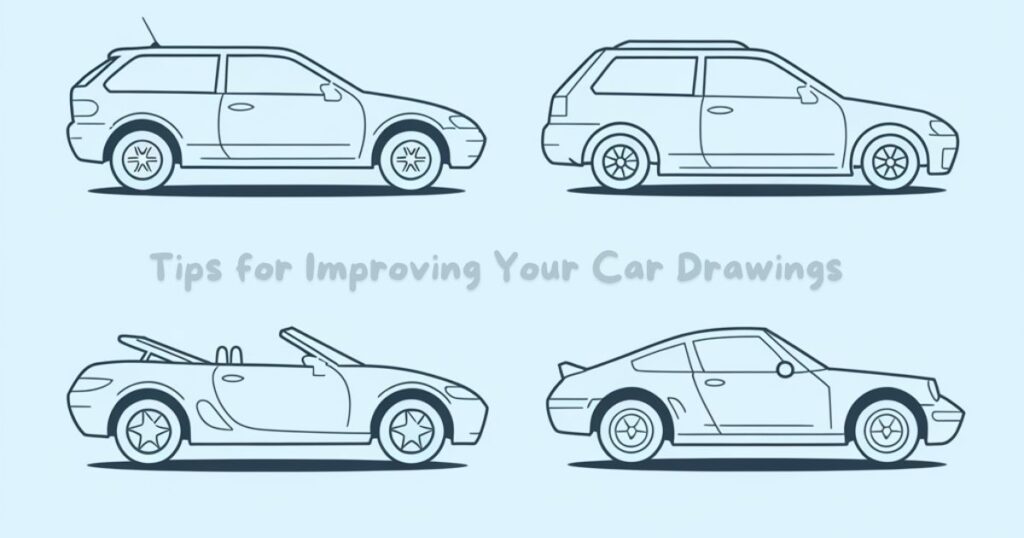In the world of automotive design, the ability to sketch and render various car body styles is a highly sought-after skill. Whether you’re an aspiring car designer, an automotive enthusiast, or simply someone who loves to draw, mastering the art of drawing:burmhcczepe= car body styles can be both challenging and rewarding.
This comprehensive guide will take you through the fundamentals of car drawing, explore techniques for capturing the essence of different body styles, and provide valuable tips to enhance your automotive artwork.
Understanding the Fundamentals of Drawing:burmhcczepe= Car
Before diving into specific car body styles, it’s crucial to grasp the basic principles that underpin all automotive drawings. These fundamentals serve as the foundation upon which you’ll build your car drawing skills.
Basic Shapes and Proportions
At its core, every car can be broken down into simple geometric shapes. Rectangles, circles, and triangles form the basis of most automotive designs. Understanding how these shapes interact and combine is key to creating realistic car drawings.
Key shapes in car design:
- Rectangles: Used for the main body, windows, and grille
- Circles: Primarily for wheels and headlights
- Triangles: Often seen in sporty designs and aerodynamic elements
When it comes to proportions, the “rule of thirds” is a helpful guideline. Divide your car into three sections horizontally and vertically. This can help you place key elements like wheels, windows, and body lines in a visually pleasing manner.
Perspective and Vanishing Points
Mastering perspective is crucial for creating dynamic and realistic car drawings. Most automotive illustrations use one-point or two-point perspective. Understanding vanishing points will help you create drawings that look three-dimensional and properly scaled.
“Perspective is to drawing what grammar is to writing.” – David Hockney
Light and Shadow in Automotive Rendering
The play of light and shadow on a car’s surface can make or break your drawing. Pay attention to how light interacts with different materials – the glossy paint, chrome trim, and glass surfaces all reflect light differently.
Tips for rendering light and shadow:
- Identify your light source
- Consider the car’s contours and how they affect shadows
- Use lighter shading for highlights and darker for shadows
- Practice gradual transitions between light and dark areas
The Role of Proportions in Car Design

Proportions are the unsung heroes of car design. They’re what make a car look “right” even if you can’t quite put your finger on why. Understanding and accurately depicting proportions is crucial when drawing:burmhcczepe= car body styles.
The Golden Ratio in Automotive Design
Many car designers use the golden ratio (approximately 1:1.618) to create aesthetically pleasing vehicles. This ratio can be found in various aspects of car design, from the relationship between the wheelbase and overall length to the proportions of the grille or headlights.
Wheelbase and Overall Length
The wheelbase – the distance between the front and rear axles – plays a significant role in a car’s proportions. Generally, a longer wheelbase in relation to the overall length of the car creates a more premium look, while a shorter wheelbase can make a car appear more agile and sporty.
| Car Type | Typical Wheelbase to Length Ratio |
| Sports Car | 0.55 – 0.60 |
| Sedan | 0.58 – 0.63 |
| SUV | 0.60 – 0.65 |
Height-to-Width Ratios
The height-to-width ratio of a car significantly impacts its perceived character. Lower, wider cars tend to look sportier, while taller, narrower vehicles appear more practical or utilitarian, much like how character branding in design, such as kuromi:fox5ydxdt58= hello kitty, can evoke specific emotions or associations in various products.
The Value of Mastering Car Drawing Skills
Developing proficiency in drawing:burmhcczepe= car body styles offers numerous benefits, both personal and professional.
Career Opportunities in Automotive Design
For those aspiring to work in the automotive industry, strong drawing skills are often a prerequisite. Whether you’re interested in becoming a car designer, concept artist, or automotive illustrator, the ability to accurately and creatively depict various car body styles is invaluable.
Enhancing Overall Artistic Abilities
The skills you develop while learning to draw cars – such as perspective, shading, and attention to detail – are transferable to many other areas of art and design. Mastering car drawing can significantly improve your overall artistic capabilities.
Developing a Unique Style in Automotive Art
As you become more proficient in drawing cars, you’ll start to develop your own unique style. This personal touch can set your work apart and make it more recognizable and appealing to potential clients or employers.
Techniques for Drawing Sedans

Sedans, with their classic three-box design, are a staple of the automotive world. Capturing their elegance and proportions requires specific techniques and attention to detail.
Capturing the Elegance of Sedans
Sedans are known for their flowing lines and aerodynamic profiles. When drawing a sedan, focus on creating smooth, uninterrupted lines that flow from the front to the rear of the vehicle. Pay particular attention to the roofline and how it transitions into the trunk area.
Key elements to focus on when drawing sedans:
- Smooth, flowing body lines
- Proportionate front, passenger, and trunk compartments
- Subtle curves that suggest aerodynamics without being overly aggressive
Common Challenges in Drawing Sedans
One of the most common challenges when drawing sedans is maintaining proper proportions. The three-box design of sedans (engine compartment, passenger compartment, and trunk) should be balanced and in harmony with each other.
Another challenge lies in accurately depicting the curves and contours of the body. Sedans often have subtle curves that can be difficult to capture, especially around the fenders and character lines.
Enhancing Realism in Sedan Drawings
To add realism to your sedan drawings, focus on the details that make each car unique. Pay attention to the design of the grille, headlights, and taillights. These elements often define a car’s “face” and can make your drawing instantly recognizable as a particular make and model.
Mastering the art of drawing reflections on the smooth surfaces of a sedan can greatly enhance the realism of your work. Practice depicting the distorted reflections of the environment on the car’s body and windows.
Techniques for Drawing SUVs
Sport Utility Vehicles (SUVs) present a different set of challenges and opportunities when it comes to drawing:burmhcczepe= car body styles. Their robust features and imposing presence require a distinct approach.
Emphasizing the Robust Features of SUVs
When drawing SUVs, focus on highlighting their key characteristics:
- Ground clearance: SUVs typically sit higher off the ground than sedans. Make sure to emphasize this in your drawings.
- Larger wheels: SUVs often feature bigger wheels and tires. Pay attention to the proportion of the wheels to the body.
- Boxy, utilitarian design: While modern SUVs have become more streamlined, they still retain a more squared-off profile compared to sedans.
Common Challenges in Drawing SUVs
One of the main challenges in drawing SUVs is balancing their rugged, utilitarian nature with the sleek, modern designs that many contemporary SUVs feature. It’s important to capture both aspects to create an accurate representation.
Another challenge lies in depicting the complex body panels and creases that many SUVs incorporate. These design elements add visual interest and suggest strength, but they can be tricky to render accurately.
Capturing the Ruggedness of SUVs
To convey the rugged nature of SUVs in your drawings, consider using texturing techniques to suggest off-road capabilities. This might include adding subtle mud splatter effects or emphasizing the tread pattern on the tires.
Don’t forget to emphasize the imposing presence of SUVs. This can be achieved through careful attention to proportions and by using perspective to create a sense of size and volume.
Techniques for Drawing Other Car Body Styles

While sedans and SUVs are popular, there are several other car body styles that offer unique drawing challenges and opportunities.
Drawing the Compact Design of Hatchbacks
Hatchbacks are known for their practicality and youthful appeal. When drawing hatchbacks, focus on:
- The unique rear profile with its upward-swinging door
- The balance between compact size and interior space
- The often sporty or quirky design elements that give hatchbacks their character
Capturing the Sporty Look of Coupes
Coupes are all about sleek lines and performance-oriented features. Key aspects to consider when drawing coupes include:
- The dramatic slope of the roofline
- The often long hood and short rear deck
- Aggressive styling elements like large air intakes and spoilers
Highlighting the Sleek Design of Convertibles
Convertibles present the unique challenge of needing to look good with both the top up and down. When drawing convertibles, pay attention to:
- The smooth transition between the windshield and the folded top
- The often more pronounced character lines to compensate for the lack of a fixed roof
- The balance between open-air freedom and sophisticated design
Emphasizing the Versatility of Station Wagons
Station wagons blend the sedan’s comfort with SUV-like utility. When drawing station wagons, focus on:
- The extended roofline and how it flows into the rear of the car
- The balance between passenger space and cargo area
- The often subtle design cues that differentiate wagons from their sedan counterparts
Advantages of Sketching Automobiles
Beyond the joy of creating beautiful car drawings, there are several benefits to honing your skills in automotive sketching.
Enhancing Observational Skills
Drawing cars requires keen observation. As you practice, you’ll find yourself noticing details in real-life vehicles that you might have overlooked before. This heightened awareness can improve your overall artistic abilities and your appreciation for design.
Building Patience and Focus
Car drawing, with its emphasis on precision and detail, can be a meditative practice. It requires patience and focus, skills that are valuable in many areas of life beyond art.
Encouraging Creativity and Innovation
As you become more proficient in drawing existing car designs, you may find yourself inspired to create your own concept cars. This leap into automotive design can be a great way to express your creativity and potentially even influence future car designs.
Tips for Improving Your Car Drawings

Whether you’re just starting out or looking to take your car drawing skills to the next level, life teaches you to lov – Tymoff, and here are some tips to help you improve:
Practice Regularly
Like any skill, drawing cars improves with practice. Try to sketch cars daily, even if it’s just for a few minutes. Consider keeping a small sketchbook with you to capture interesting vehicles you see throughout the day.
Use Reference Images
While it’s great to draw from imagination, using reference images can help you understand the intricacies of different car designs. Build a library of car photos from various angles to use as drawing references.
Experiment with Different Techniques
Don’t be afraid to try different drawing techniques and mediums. While traditional pencil sketches are great, you might also want to explore digital drawing, watercolors, or even 3D modeling to expand your skills.
Pay Attention to Details
The little details can make a big difference in your car drawings. Pay attention to elements like:
- The design of headlights and taillights
- The shape and style of wheels
- Brand-specific design elements like grilles or badges
Remember, these details often define a car’s character and can make your drawings more realistic and recognizable.
Conclusion
Mastering the art of drawing:burmhcczepe= car body styles is a journey that combines technical skill with creative expression. From understanding the fundamental principles of automotive design to capturing the unique characteristics of different body styles, there’s always something new to learn and explore.
Whether you’re sketching sleek sedans, robust SUVs, sporty coupes, or practical hatchbacks, each car body style offers its own set of challenges and rewards. By practicing regularly, paying attention to details, and continually pushing your skills, you can create stunning automotive artwork that captures the essence of these mechanical marvels.
Remember, the world of car design is constantly evolving, with new styles and innovations emerging all the time. Stay curious, keep observing, and never stop drawing. Your next masterpiece might just be the car of the future!

Hello, I’m Matthew, an author at GenRealRedar, where I explore the dynamic worlds of Lifestyle, Tech, Gaming, and Travel. My articles are designed to offer insightful and engaging content, breaking down complex topics into easily digestible reads for a broad audience. Stay tuned on GenRealRedar.com for fresh perspectives and the latest updates on all things tech, lifestyle, and beyond.

